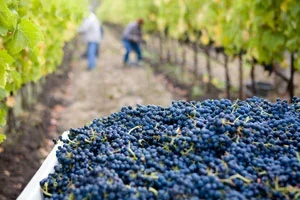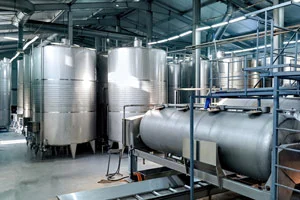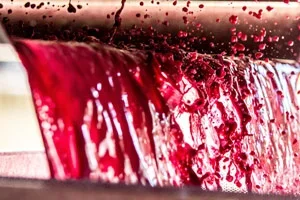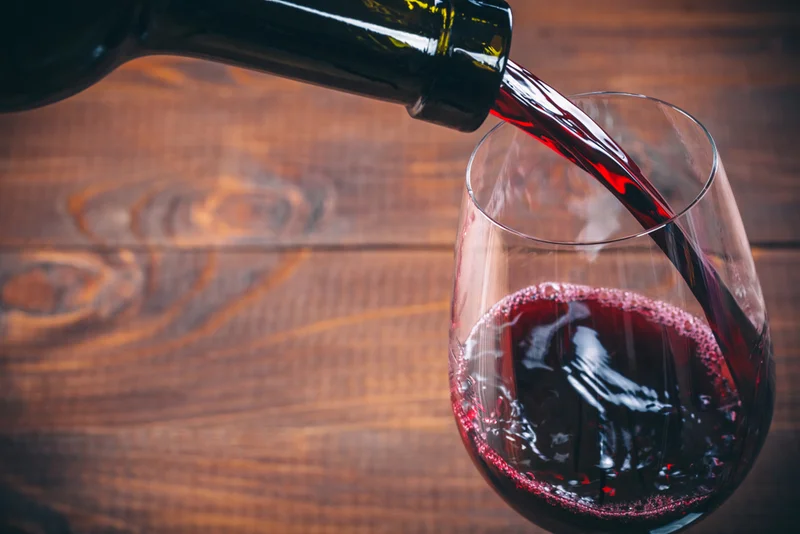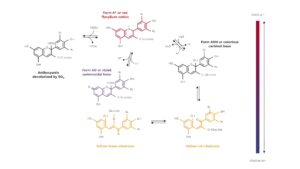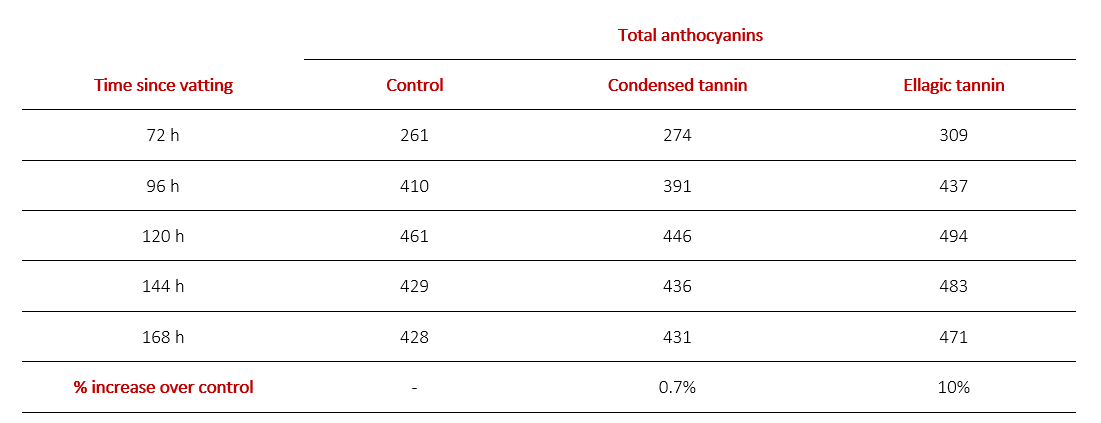Enological tannins are phenolic compounds of plant origin that play a fundamental role in the structure, stability, and sensory expression of wines. Naturally present in the solid parts of the grape (skins, seeds, and stems) or added exogenously, tannins have evolved from being considered a passive wine component to becoming a strategic tool in modern winemaking.
The pursuit of distinctive organoleptic profiles, the need to correct imbalances caused by climate change, and evolving consumer tastes have positioned tannins—especially fining tannins—as essential allies for achieving stable, expressive wines adapted to different markets.
Classification and Botanical Origin of Tannins
From a structural perspective, tannins are divided into two major groups:
Condensed Tannins
These come from plant tissues such as seeds, skins, or stems. They are formed by polymerized flavonoids, and their degree of polymerization influences their enological behavior (astringency, reactivity, solubility). For example, seed tannins have an average polymerization degree of 11, while skin tannins can reach values of around 30.
Tanicol Vintage is a representative example of a condensed tannin: 100% grape-seed-based, characterized by high reactivity, antioxidant power, and the ability to improve color stability.
Hydrolyzable Tannins
These are not naturally found in grapes but can enter wine through wood (barrels) or controlled addition. They are divided into:
-
Gallotannins: Derived from tara pods or galls.
-
Ellagitannins: Obtained mainly from oak or chestnut.
Both types present antioxidant properties, protein reactivity, and the ability to promote copigmentation and protect anthocyanins.
Technological and Sensory Applications of Tannins
Color Stabilization
One of the main current challenges is maintaining color intensity in red wines, especially in cases of limited phenolic ripeness. The addition of condensed and/or ellagic tannins during fermentation promotes:
-
The formation of stable tannin–anthocyanin combinations (condensed tannins).
-
The precipitation of proteins that could destabilize color.
-
Copigmentation (especially through ellagic tannins).
-
A decrease in monomeric (more oxidizable) anthocyanins and an increase in polymerized (more stable) anthocyanins.
Figure 1. Balance of anthocyanins as a function of pH (Zamora 2013)
A joint study by Agrovin and the University of Turin using Barbera grapes confirmed that the combined use of condensed and ellagic tannins during fermentation increases the color fraction, improves stability, and reduces anthocyanin oxidability.
Table 1. Measurement of total anthocyanins (mg/l) during fermentation (AGROVIN, 2018)
The addition of the ellagic tannin mainly causes an increase in the concentration of anthocyanins from the first moments of fermentation. This is due to its protective effect against oxidation, protein precipitation and co-pigmentation phenomena.
After bottling the wines, the concentrations of monomeric and total anthocyanins are observed, obtained with the use of the different tannins:
Graph 1. Content of total and monomeric anthocyanins (mg/l) in the different tests (AGROVIN, 2018)
An increase of 20% in the concentration of total anthocyanins is observed with the use of ellagic tannin, and almost 10% with the use of condensed tannin. It is also observed that the use of condensed tannin lowers the concentration of easily oxidisable monomeric anthocyanins.
This last graph shows the distribution of anthocyanins in various polymerisation phases.
Graph 2. Distribution of anthocyanins in different phases of polymerisation (AGROVIN, 2018)
The highest percentage of polymerized (and therefore more stable) anthocyanins is achieved with condensed tannins.
Conclusion:
The use of tannins positively influences anthocyanin concentration, color fraction, and overall color stabilization. A combination of condensed and ellagic tannins provides the most effective treatment for enhancing color in red wines.
Protection Against Oxygen
The antioxidant action of tannins occurs through three complementary mechanisms:
-
Direct oxygen consumption (O₂).
-
Chelation of heavy metals that catalyze oxidation reactions (such as Fe³⁺ or Cu²⁺).
-
Inhibition of oxidase enzymes (antioxidase effect).
These functions improve wine longevity and resistance to both chemical and microbial oxidation.
Protein Precipitation
During the initial stages of fermentation, tannins can form complexes with unstable must proteins. Their early precipitation favors cleaner and more stable winemaking, protecting the grape’s native tannins. Ellagic tannins are particularly reactive toward proteins.
Contribution to Body and Structure
Both condensed and ellagic tannins increase the total polyphenol index (TPI), enhancing mouthfeel, volume, persistence, and roundness. This is especially useful in wines with low phenolic extraction or in those targeting markets that prefer smooth, balanced profiles.
Alignment with Desired Sensory Profile
Fining tannins allow winemakers to shape the wine’s style after fermentation. Depending on the botanical source and thermal treatment, specific effects can be achieved:
-
Fruit: Red Vintage, Tan Sutil, Tanicol Blanc Excellence.
-
Sweet wood: Robletan Oakblend (lightly toasted oak → vanilla notes).
-
Complex wood: More toasted tannins → coffee and chocolate notes (Robletan Coeur, Robletan Icòne).
-
Structure without astringency: Grape tannins, Tan Sutil, Tan Reactive.
-
Sweetness: Combinations with arabic gums (Gomasol Seda), mannoproteins (Mannoplus), and vanillin-type tannins.
Modern Winemaking and Consumer-Oriented Fining
Traditionally, winemaking began in the vineyard, focusing on quality at each stage before finding the right audience. Today, the strategy is often reversed: the desired sensory profile and target market are defined first, and the enological practices are then selected to achieve that goal.
In this context, fining tannins allow the wine to be tailored to contemporary consumer preferences—softer wines, with clean fruit, integrated oak, perceived sweetness, and rounded structure.
Explore the Potential of Tannins to Transform Your Wine Would you like to achieve greater color stability, elegant structure, and a refined sensory profile?
Discover our personalized enological solutions — from fining tannins to antioxidant strategies — and take your wine to the next level. Contact our technical team and start shaping the style that sets your wines apart.
